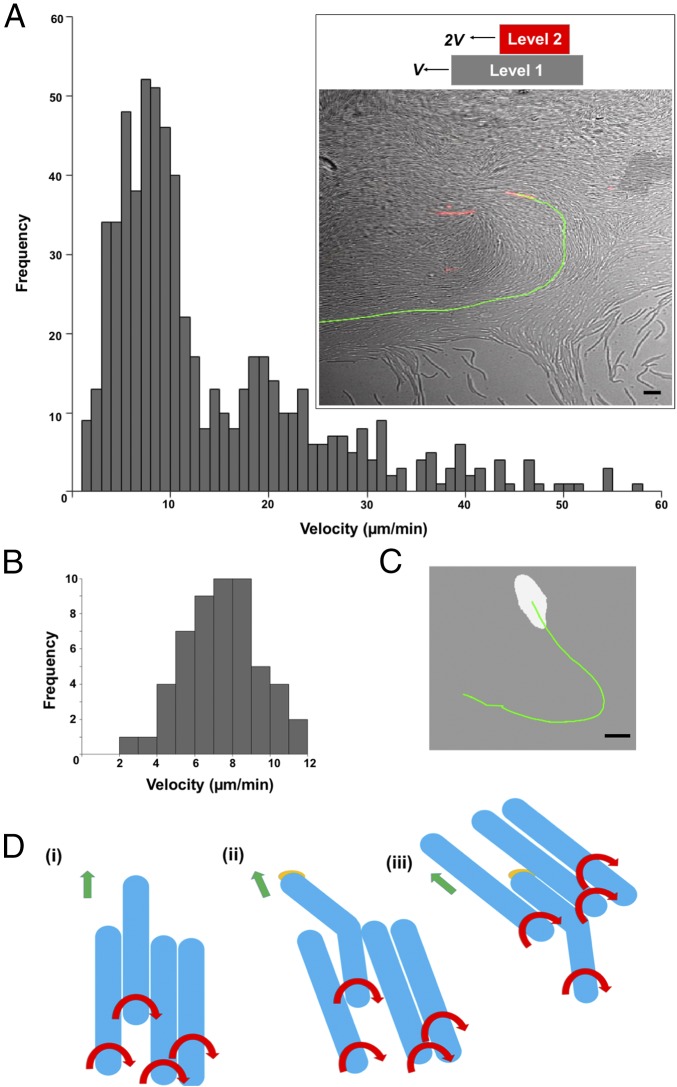Fig. 3.
Speeds of layers of a swarm are additive. (A) A bimodal frequency distribution of the speed of fluorescently labeled cells moving within a swarm. (Inset) A swarm with a fluorescently labeled cell (red) and the trajectory of that cell (green). (Scale bar: 5 µm.) (B) The frequency distribution of the speed of slugs (a small group of mobile cells). (C) A slug (white) with the trajectory of its motion in green. (Scale bar: 5 µm.) Experiments in A–C were done at 37 °C on an agar pad. (D) An explanation for how a group of cells moves counterclockwise. (i) A group of flexible cells (blue) moving as right-handed screws. Red arrows show the direction of rotation of the cell body, and green arrows show the direction of motion of a group. (ii) The leading end of one cell sticks to an external surface via multiple adhesins (orange) while the rest of the cell body keeps twisting. This produces a torsion that bends the cell toward the left of the direction of motion of the group. (iii) Cells in a group orient themselves along the cell body of the bent cell, and the group moves counterclockwise.

